FFE AUTOMATION WITH BRIX ANALYZER AND DENSITY BRIX SENSOR
FALLING FILM EVAPORATOR AND CONDENSER CONTROLS

Evaporator / Falling Film Evaporator Automation Advantages:
- Maintained Last Body Brix Hence Efficient Further Processing And Pan Boiling Produces Better Sugar Yield
- Maintained Body Level And Temperature Of Each Body Hence Excellent Mass Balance Achieved
- Constant Evaporation Rate Is Maintained, This Increases Overall Efficiency
- Auto Exhaust Steam Condensate Bypass Prevents Entrainmen
- Synchronization For All Bodies Including Juice Tanks And Cane Carriers Avoids Juice And Steam Wastaget
- Intelligent Data Analysis With Maintenance And Cleaning Alarming System Reduces Inversion And Improves Sugar Recovery
- Generates Huge Monetary Benefits
SCREENSHOT: FALLING FILM EVAPORATOR AUTOMATION
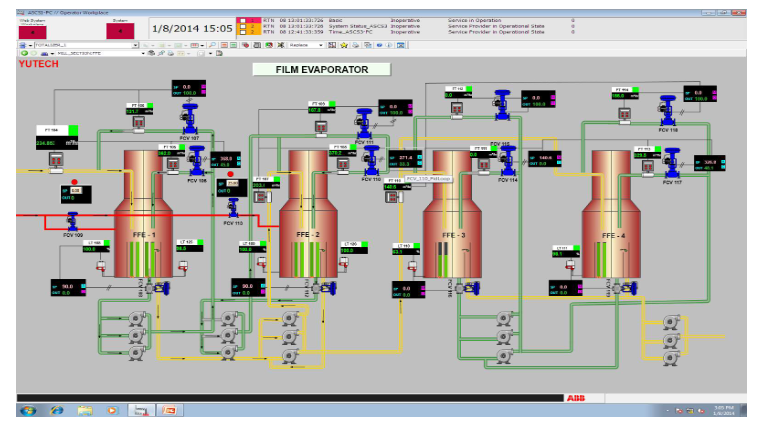
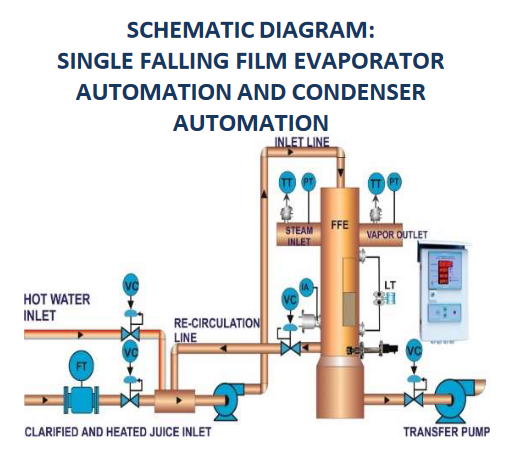
Falling Film Evaporator (Ffe) Automation:
- Evaporator Level Is Maintained For Proper Evaporation And Vapour Generation By Controlling The Transfer Valve Or Transfer Pump VFD.
- Inlet Flow To The Ffe Body Is Controlled As Per Preset Value.
- The Recirculation Valve Is Controlled In Equal Proportion To Intake Or Also Can Be Controlled As Per A Preset Proportion In Percent Terms. This Is Easily Adjustable From The HMI / SCADA.
- Water Is Introduced Automatically Only If Required.
- Optional Inlet, Recirculation, And Bypass Flow Measurement And Control Are Provided.
- Transfer, Recirculation, And Intake Are Also Controlled By The Required Outlet Brix As An Overriding Control.
- Accurately Maintained Brix Value Ensures Higher Efficiency In The Further Process.
Condenser Automation Philosophy:
- Vapour Vacuum and Temperature sensed.
- Condensate Temperature Sensed in Tail Pipe.
- Temperature Difference Calculated.
- Vacuum and Temperature Difference are both Analyzed to derive Remote Dynamic Set Point.
-
Spray Water is controlled as below:
-
Multi-Entry System:
- Spray Jets are controlled by separate ON/OFF type Control Valves as per the Remote Dynamic Set-Point.
- 2, 3, or 4 Sets of Nozzles for Spray as per Design.
- 1 or 2 Sets of Jet Nozzles as per Design are controlled only if necessary.
-
Single-Entry System:
- Spray Jets are controlled by a Control Valve in PID Action as per the Remote Dynamic Set-Point.
- 1 or 2 Sets of Jet Nozzles as per Design are controlled only if necessary.
-
Multi-Entry System:
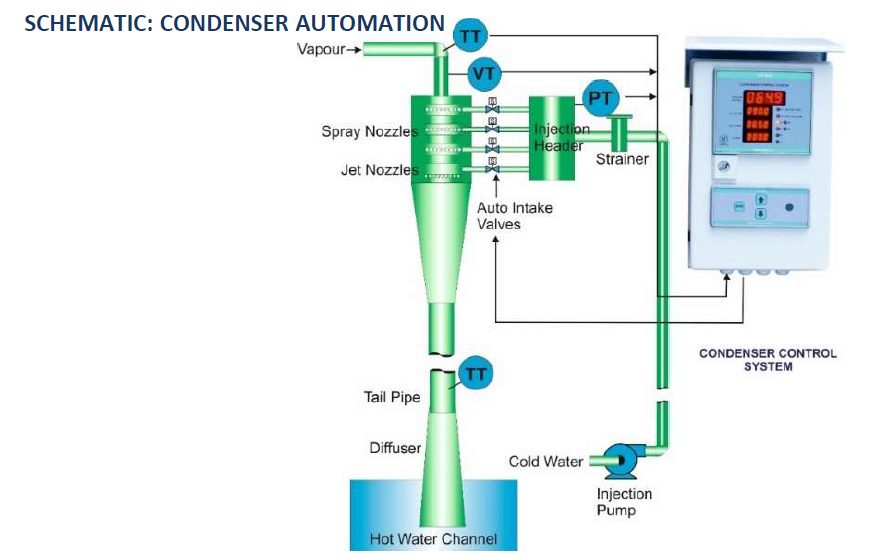
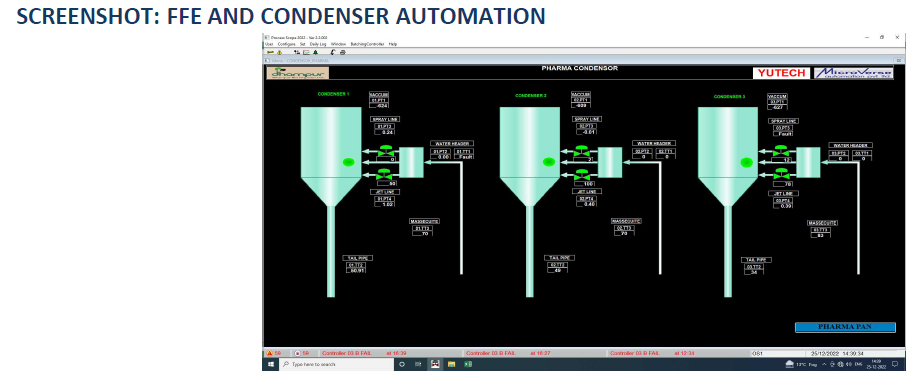
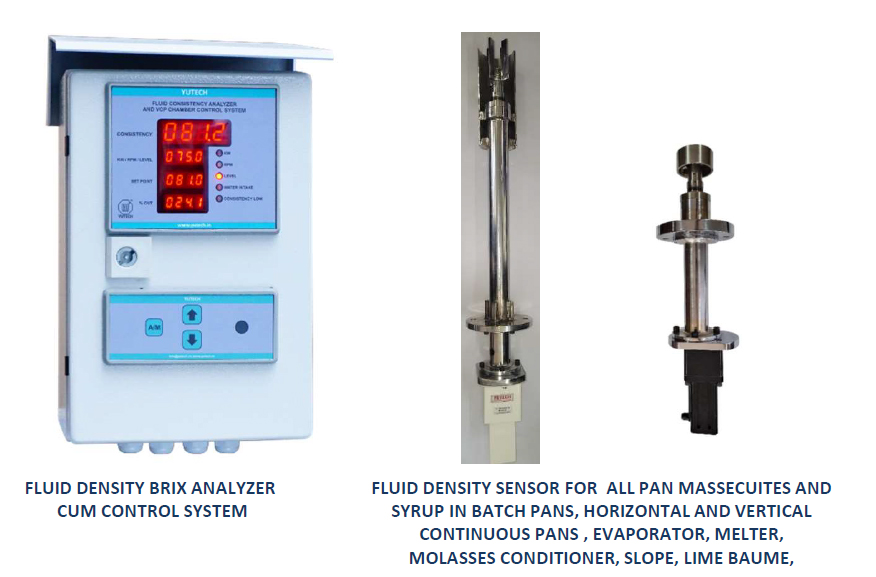
Applications In Sugar Industry:
-
Brix Of All Falling And Rising Film Evaporator Bodies, Syrup To Juice Mixing Vessels:
- Improve Evaporation Efficiency And Steam Economy
-
Brix Of Syrup, Massecuite And Melt Brix Of All Batch Pans, Vertical And Horizontal
Continuous Pans, Molasses Conditioners, Sugar Melters:
- Reduce Strike Time, Avoid False Grain, Reduce Steam And Water Consumption
- Optimize Crystal Growth And Maximize Recovery
- Baume Of Milk Of Lime
Distilleries, Breweries, Wineries, And Food And Beverages Industries:
- Brix Of Slope Or Spent Wash, Brix Or Wort Of Fermentation Tanks, Must, Wine, Fruit Pulp, Sauce, Slurry, Paste




